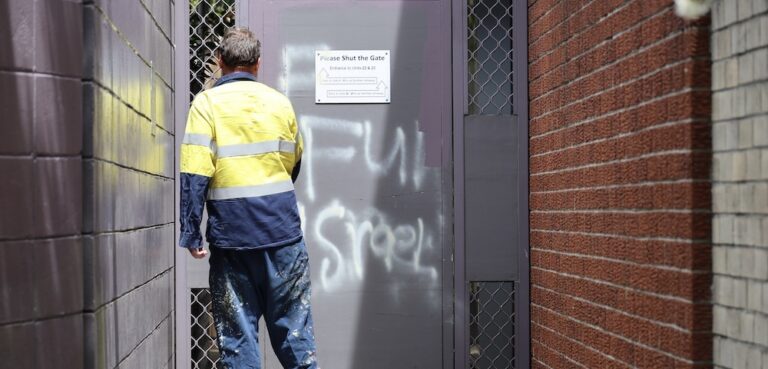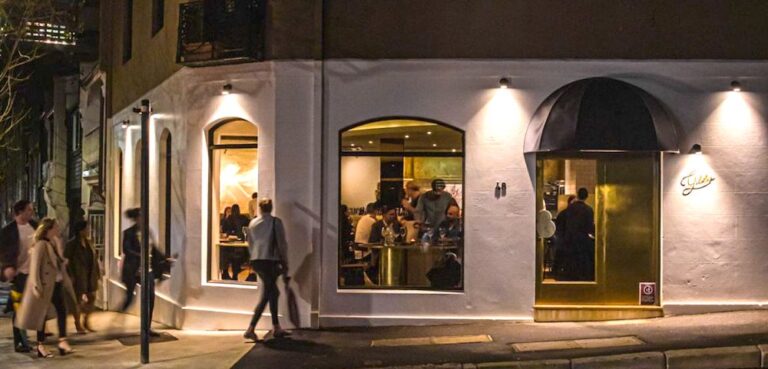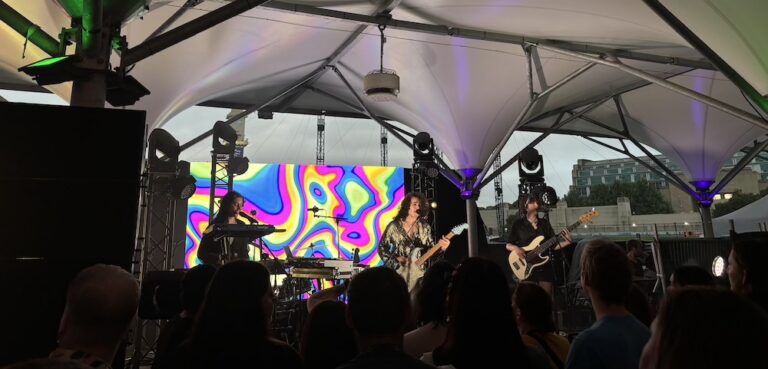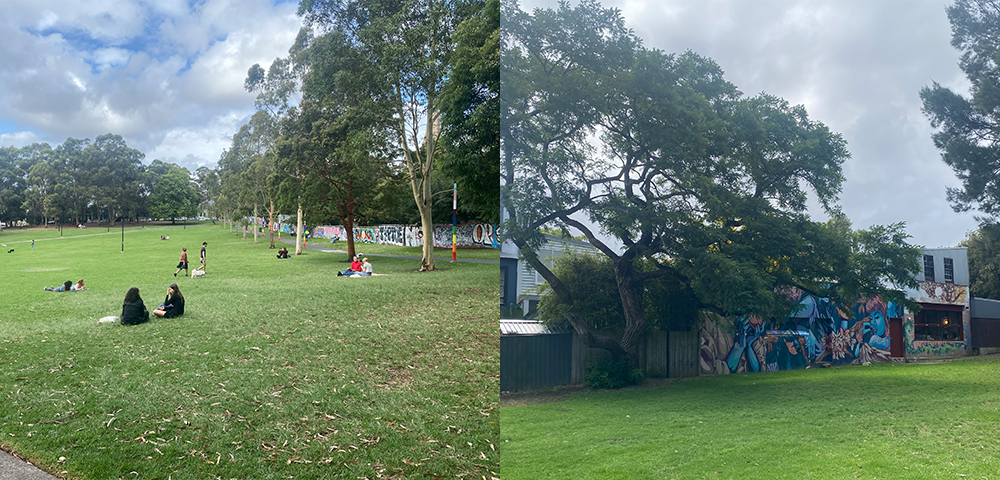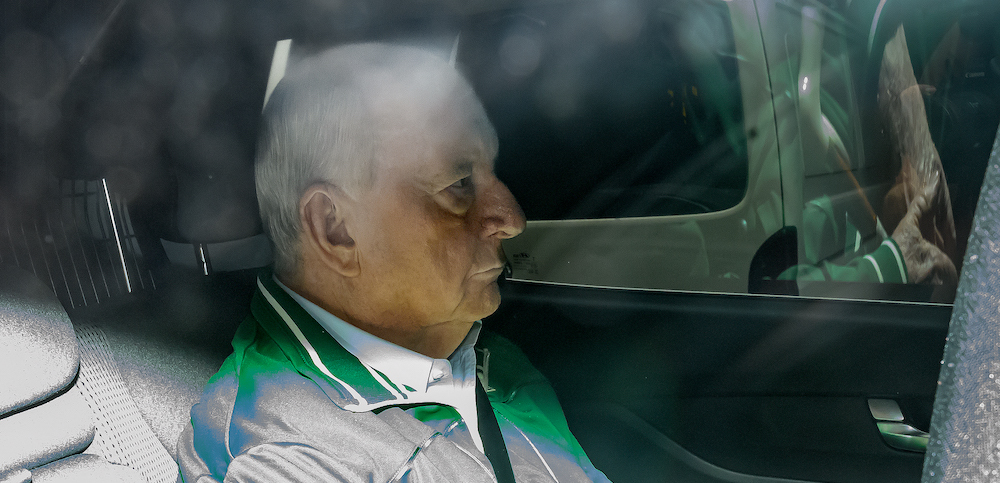
Trash talkers, toad attackers, Indigenous art destroyed: News Bites – 25 Sept 2019

Bite-sized bulletins by ALEC SMART
Trash talk
On Friday 20 September, an estimated 80,000 people – primarily youngsters – took over The Domain in Sydney for the global Strike for Climate rally, which culminated in a march to Hyde Park.
City Hub witnessed a young man clutching a green shopping bag attempt to disrupt the rally as it passed Martin Place, knocking down kids and an elderly woman in the process. However, he was quickly subdued by police, flinging away the bag with unidentified contents as he tried to flee.
Similar rallies took place in over 110 towns and cities across Australia; including 100,000 demonstrators in the city of Melbourne, and 30,000 in Brisbane, which coincided with a worldwide rally of millions.
Most of them carried hand-painted banners and wore T-shirts declaring their support for policies to halt global warming and embrace renewable energy.
On Facebook, a reactionary group calling itself Australian Youth Coal Coalition (AYCC), which routinely trolls Swedish climate activist Greta Thunberg, ran a photo purporting to show piles of rubbish left behind by the rally in Hyde Park. It was captioned: “Look at the mess today’s climate protestors left behind in beautiful Hyde Park. So much plastic. So much landfill. So sad.”
This provoked a storm of condemnation when thousands recognised the photo, already used earlier this year in Queensland to condemn supposedly messy ‘greeny’ opponents of Adani coal mine, did not come from the Sydney rally, nor from Australia, although it did come from a Hyde Park … in London.
The original image was posted to Twitter by Hemp Trading Company after an April 20 cannabis legalisation rally in London when marijuana users left behind loads of garbage. Environmental activists Extinction Rebellion, holding a rally nearby, were initially blamed, although they cleared up the mess.
After AYCC were thoroughly ridiculed, they removed the post and replaced it with another picture of a clean park, with the caption: “After the mess left behind by the climate protestors, a group of young coal supporters volunteered to do a big clean up. This is the result. Well done to them..” Curiously, there were no pictures of the ‘volunteers’ and again AYCC got it hopelessly wrong – it was the same London Hyde Park, 17,000 km away.
======================
Toadal control
The seemingly inexorable advance of cane toads, introduced to Queensland cane fields in 1935 in a dismal ploy to combat the pestilent cane beetle (which inhabit upper leaves of corn stalks beyond cane toads’ reach), might finally be checked.
After 84 years advancing at an estimated rate of 60km per year – they’re now resident Australia-wide and have even been found in Tasmania, presumably by smuggling onto container ships and trucks – a native species has devised a way to eat the toad without dying from the highly poisonous secretion, bufotoxin, that emits from parotoid glands located on its back, neck and shoulders.
But research published in Australian Mammalogy on September 23 identified an indigenous rodent in Western Australia, the rakali, has devised a way of eating the toads and surviving, which was recorded on infrared camera.
Bufotoxin is usually fatal, even when ingested in minor doses (although some hippies claim psychotropic effects from licking toads). This toxicity has caused rapid decline in numerous native species that snack on the toad, including quolls, lizards, crocodiles and raptors.
The world’s largest toad and a prolific breeder – females lay thousands of eggs and the tadpoles are also highly toxic – the cane toad’s success as a species derives not only from its poisonous glands but its enormous appetite, which includes small rodents, lizards, birds, insects, invertebrates, bats, carrion, household refuse and other toads.
Beyond a few species that can digest the poison with immunity, such as meat ants, tawny frogmouths and keelback snakes, or those clever enough to flip the enormous amphibian over and eat its vulnerable belly, such as crows and kites, most predators fall prey to the poison.
Yet within two years of toads invading their territory in the Kimberley region, the highly intelligent rakali devised ways of attacking the toad’s belly and eating its’ nutritious heart and liver while avoiding the gall bladder, which contains toxic bile. Favouring large toads while ignoring juveniles, the rakali bite into the toad’s chest cavity with surgical precision to devour the desired organs whilst bypassing the bufotoxin. Rakali, also known as water rats, now actively hunt the toxic toads.
======================
Aboriginal relics torched
An investigation by ABC TV’s Background Briefing in Wangkatjungka, in the Kimberley region of Western Australia, revealed a group of Christian missionaries burned sacred Aboriginal objects to decry ‘devil worship’.
The Christians, led by Tongan-born Pentecostal preacher Ana Makahununiu, who claims to be a “prophetess” channelling the word of God, were convinced Aboriginal artefacts were ‘Satanic’, and followed her advice to destroy them to purify their lives.
The community of 180 mainly Indigenous people is located within the Kurungal Native Title area, and speak their own tribal dialect. Yet not long after her arrival, Pastor Makahununiu persuaded the residents to purge their Aboriginal ancestry and become ‘born-again’ Christians.
In 2016, a year after the preacher arrived in the rural community, the recently-converted locals defied Aboriginal elders and dismantled a spiritual law ground, then built a huge bonfire to rid the town of ‘Satanic objects’, and filmed themselves cheering as cultural relics and sacred artefacts were tossed onto the flames.
In archival footage of the bonfire, broadcast by the ABC, a man states: “For many years we have been deceived by Satan and his demonic beings. Now we throw away all the things that have been keeping us in bondage and slavery.”
In describing the artefact-burning, shocked Aboriginal leader, Senator Pat Dodson, said: “They are a type of virus that has really got no credibility… It’s about the lowest act you could perform in trying to indicate to a fellow human being that you have total disdain for anything they represent.”
Meanwhile, the Pentecostal pastor, who accepted free board and food during her three-year tenure in Wangkatjungka, now reportedly preaches at a church in Homebush, Sydney, (although City Hub were unable to confirm where) and, according to the ABC, works illegal cash-in-hand jobs due to her restricted visa status.
======================
Maori statue castrated
In other religious news this month, on 12 September a New Zealand court convicted and fined a 78-year-old self-described ‘devoted Christian’, Milton Wainwright, for Wilful Damage, fining him $2000 after he hacked the penis off a Maori statue.
The statue, at an entrance to the Manawatū Gorge Reserve walking track, which represents the Rangitāne Maori’s ‘whakapapa’ (link to their tribal ancestors), was irreparably damaged on April 16 this year.
The figure was part of a set of carvings called Te Hononga Maunga, intended to offer safe passage to people passing through the Manawatū Gorge, usually complimented by the recital of karakia (prayers).
However, the statue ‘disgusted’ Wainwright, a volunteer caretaker on the track, and after an unsuccessful complaint to Tararua Council Mayor Tracy Collis, who attended its installation four months earlier, he tried sawing off the phallus with a hacksaw. However, the hardwood eluded his efforts, so he returned the next day and reduced the wooden penis to sawdust with a chainsaw.
From the early 19th century, when Christian missionaries from Europe arrived in New Zealand, Māori carvings were frequently defaced, because they typically featured prominent sexual organs, which were not considered offensive to Maori peoples.
Wainwright who remains unrepentant and insists he had God’s approval, said after the court ruling: “I don’t see how it can be wrong to make an indecent thing so decent. He who doesn’t stand for something will fall for anything. I stood for decency in public places. When indecent statues are put in public in the name of culture, we have lost our chart and compass.”
On 24 September Rangitāne Maoris announced they were funding a replacement statue from the $2000 compensation.
Wainwright runs the ironically-named Organ Museum in nearby Woodville with his wife, and would no doubt be incensed if his collection of over 150 reed organs, many of which are sourced from churches, were hacked apart with chainsaws due to religious differences.
======================

